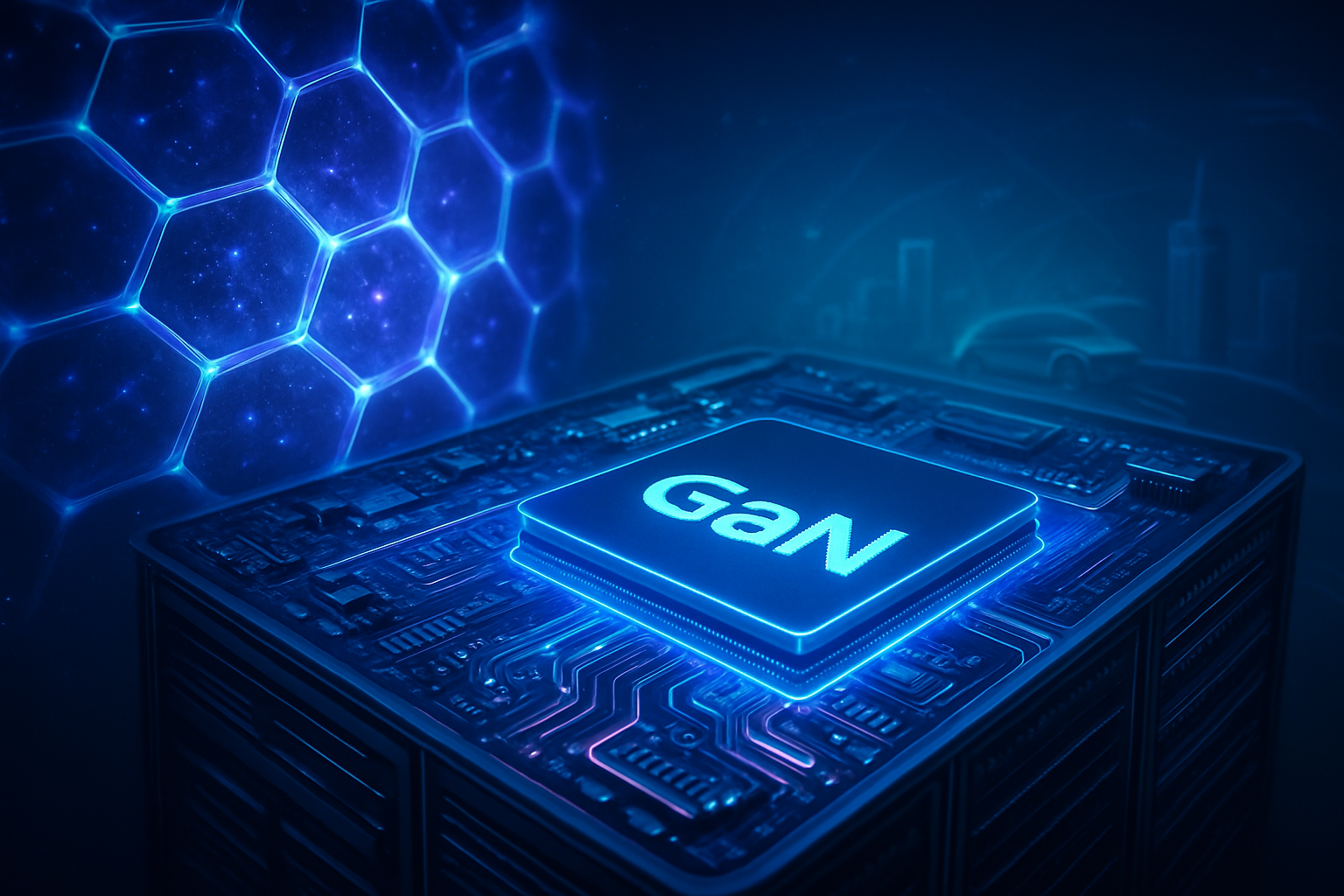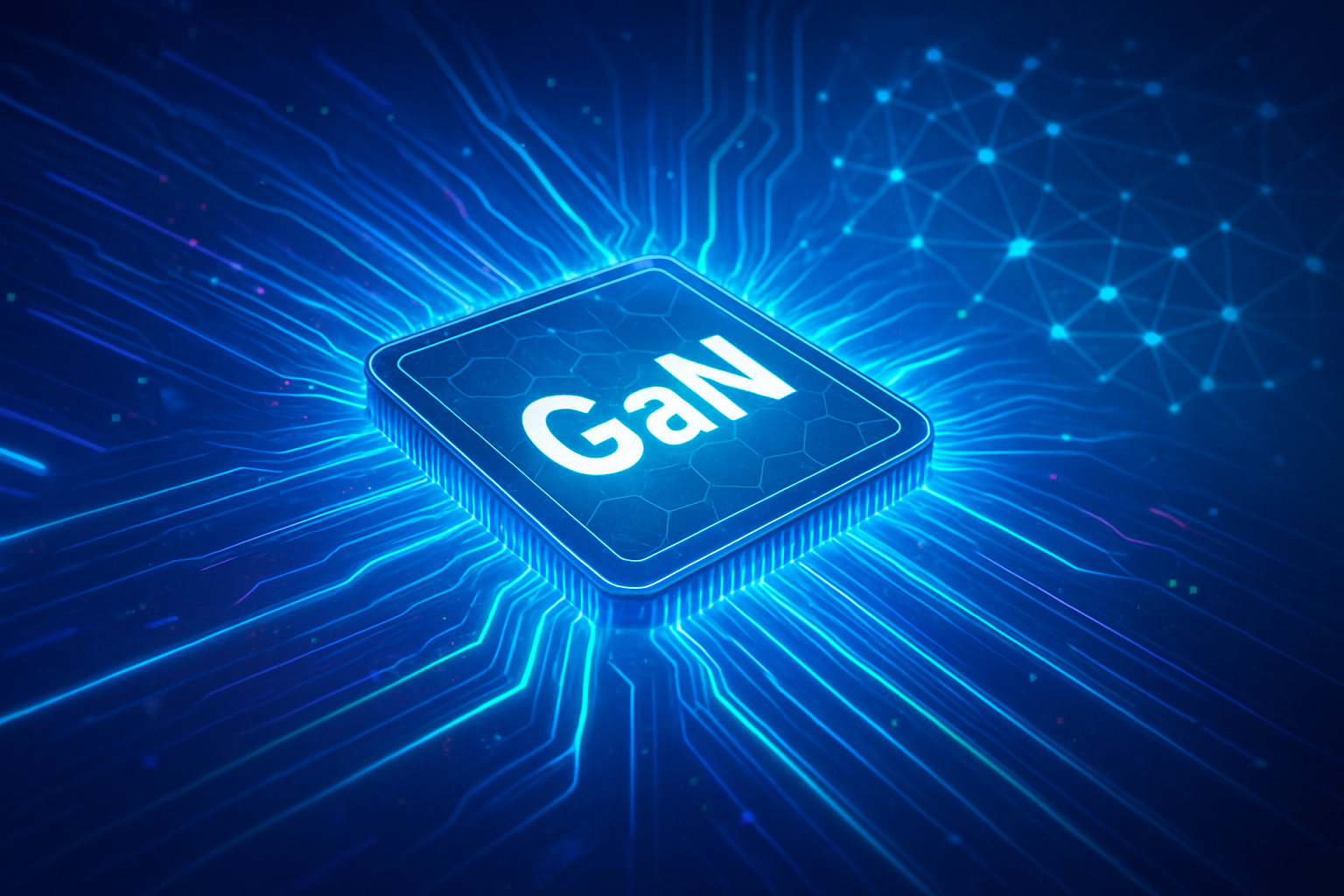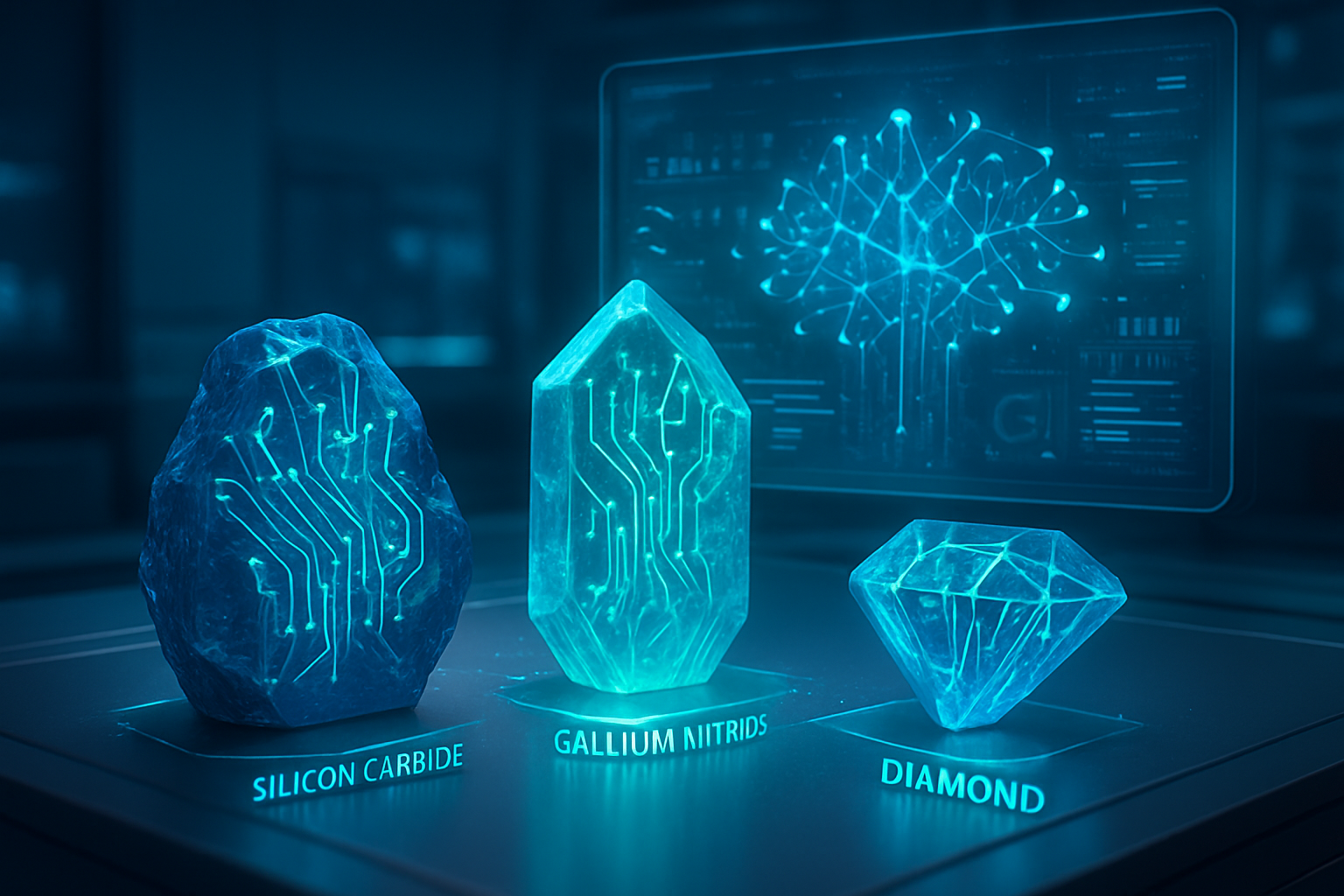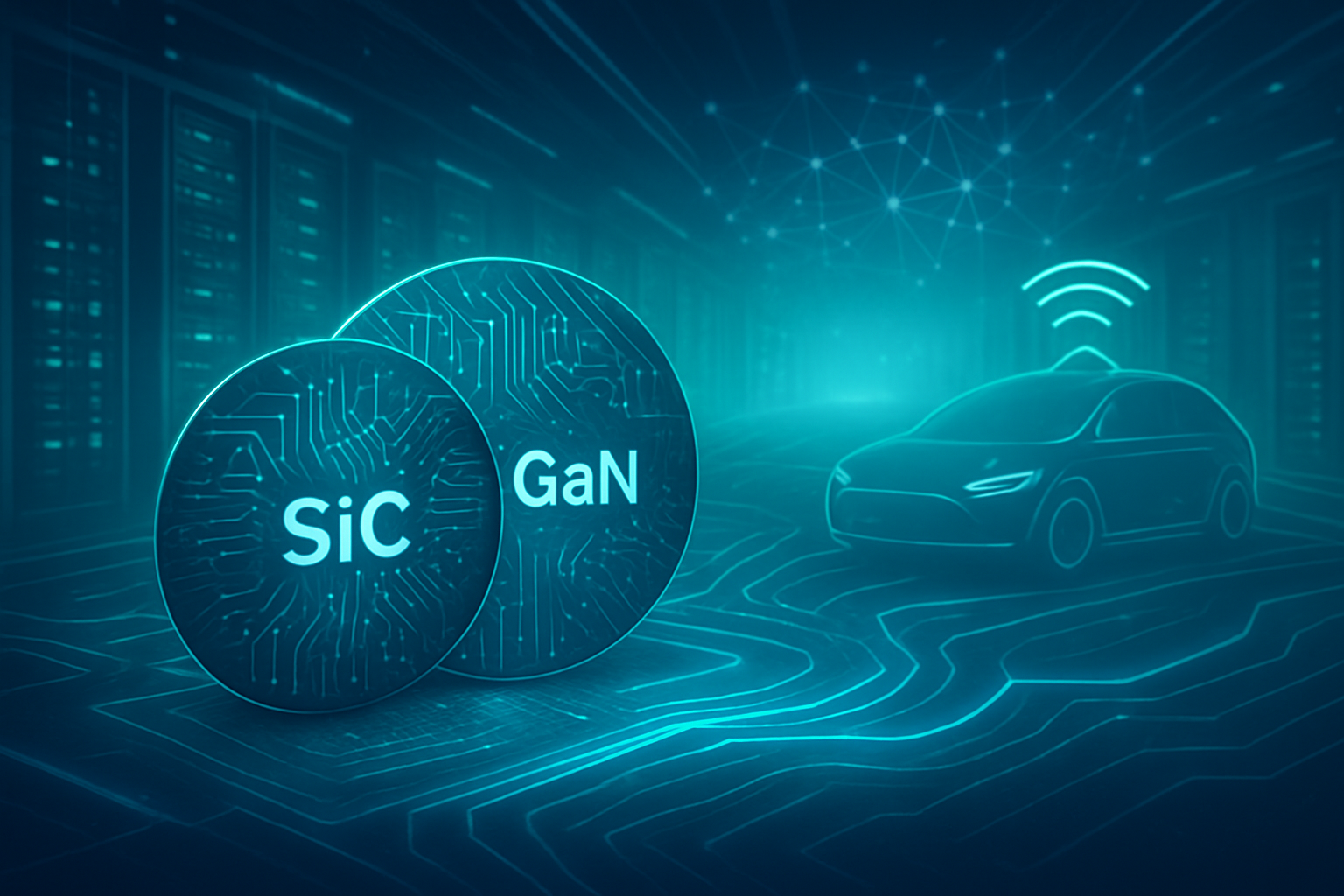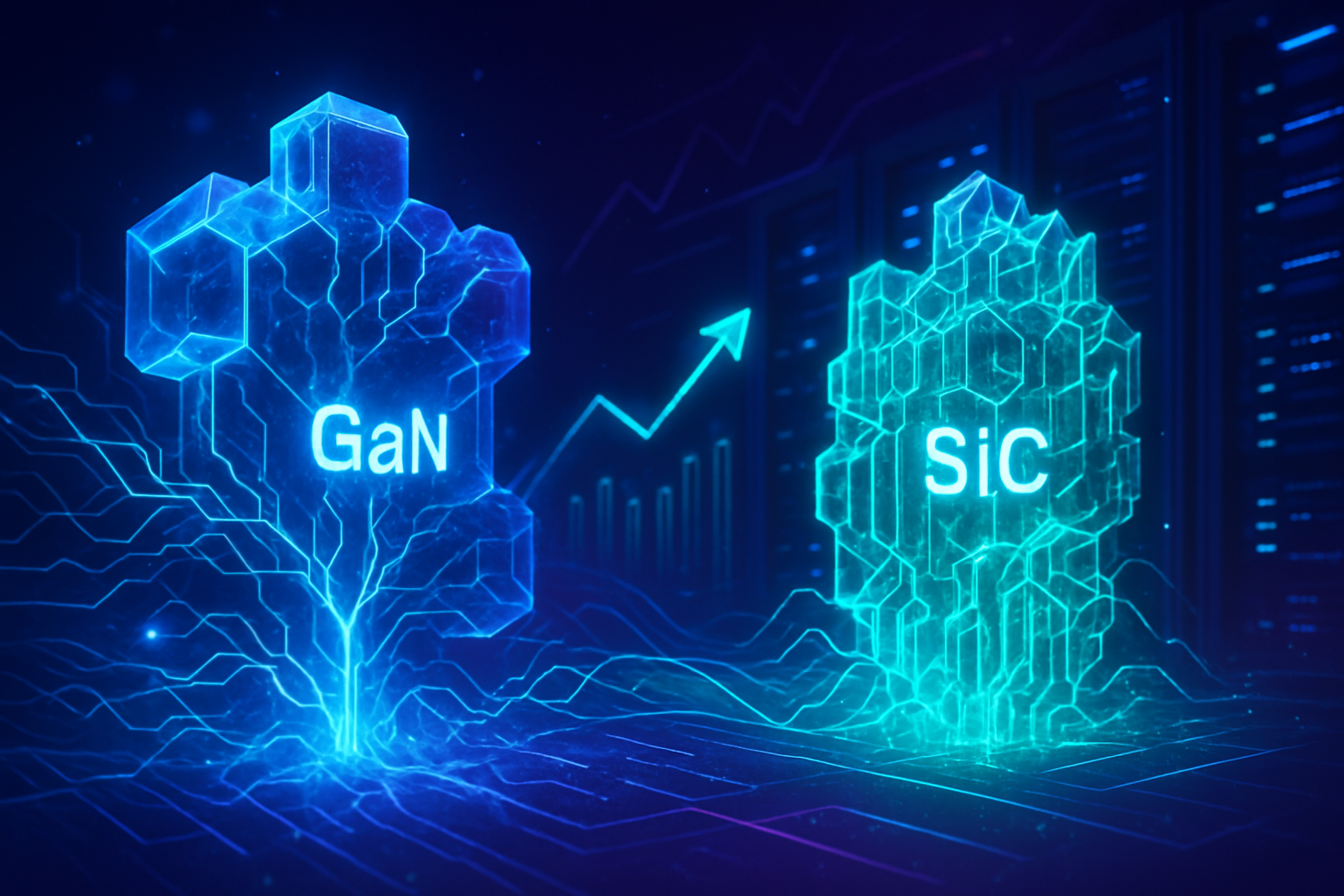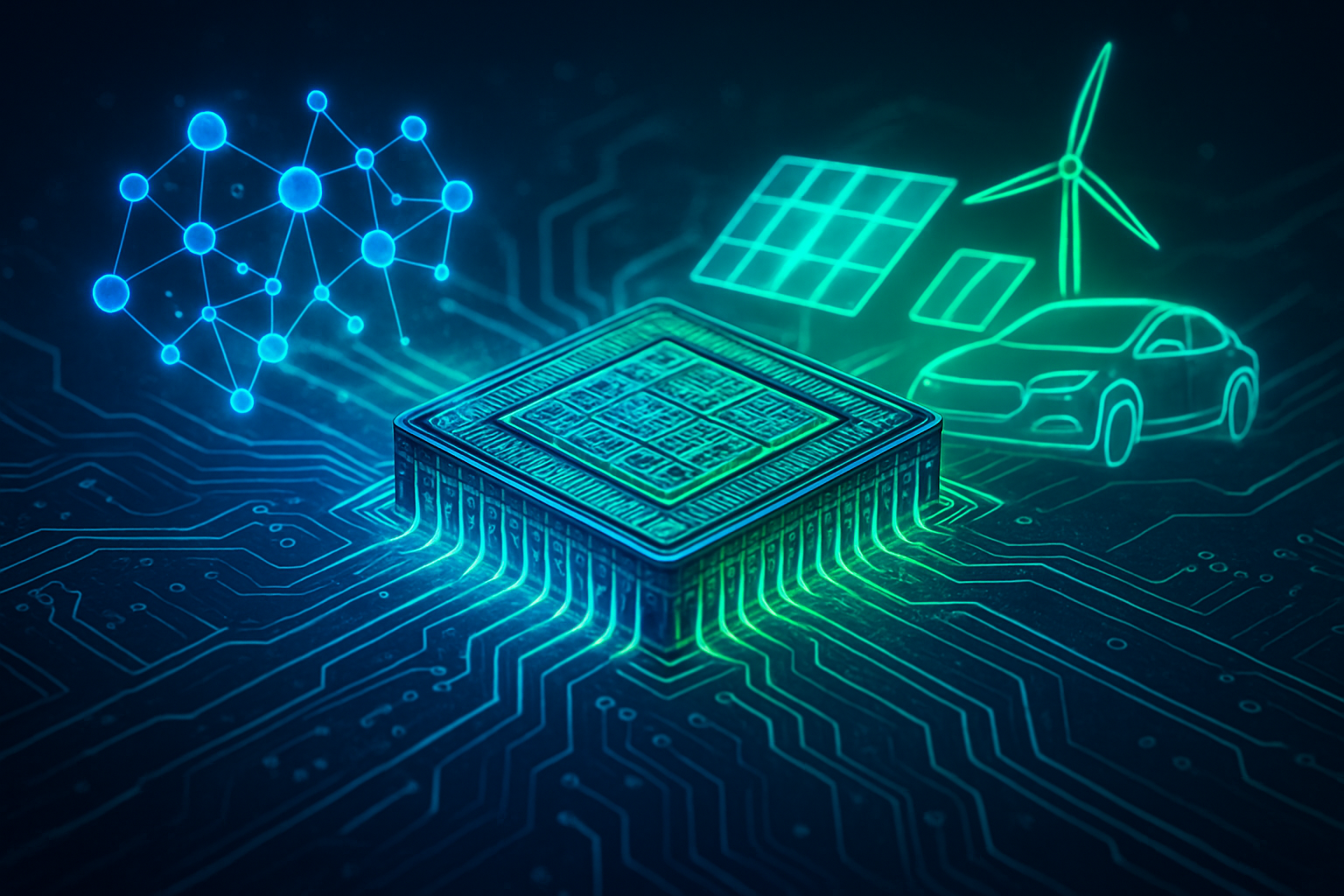The relentless march of Artificial Intelligence (AI) demands ever-increasing computational power, pushing the limits of traditional silicon-based hardware. As AI models grow in complexity and data centers struggle to meet escalating energy demands, a new material is stepping into the spotlight: Gallium Nitride (GaN). This wide-bandgap semiconductor is rapidly emerging as a critical component for more efficient, powerful, and compact AI hardware, promising to unlock technological breakthroughs that were previously unattainable with conventional silicon. Its immediate significance lies in its ability to address the pressing challenges of power consumption, thermal management, and physical footprint that are becoming bottlenecks for the future of AI.
The Technical Edge: How GaN Outperforms Silicon for AI
GaN's superiority over traditional silicon in AI hardware stems from its fundamental material properties. With a bandgap of 3.4 eV (compared to silicon's 1.1 eV), GaN devices can operate at higher voltages and temperatures, exhibiting significantly faster switching speeds and lower power losses. This translates directly into substantial advantages for AI applications.
Specifically, GaN transistors boast electron mobility approximately 1.5 times that of silicon and electron saturation drift velocity 2.5 times higher, allowing them to switch at frequencies in the MHz range, far exceeding silicon's typical sub-100 kHz operation. This rapid switching minimizes energy loss, enabling GaN-based power supplies to achieve efficiencies exceeding 98%, a marked improvement over silicon's 90-94%. Such efficiency is paramount for AI data centers, where every percentage point of energy saving translates into massive operational cost reductions and environmental benefits. Furthermore, GaN's higher power density allows for the use of smaller passive components, leading to significantly more compact and lighter power supply units. For instance, a 12 kW GaN-based power supply unit can match the physical size of a 3.3 kW silicon power supply, effectively shrinking power supply units by two to three times and making room for more computing and memory in server racks. This miniaturization is crucial not only for hyperscale data centers but also for the proliferation of AI at the edge, in robotics, and in autonomous systems where space and weight are at a premium.
Initial reactions from the AI research community and industry experts have been overwhelmingly positive, labeling GaN as a "game-changing power technology" and an "underlying enabler of future AI." Experts emphasize GaN's vital role in managing the enormous power demands of generative AI, which can see next-generation processors consuming 700W to 1000W or more per chip. Companies like Navitas Semiconductor (NASDAQ: NVTS) and Power Integrations (NASDAQ: POWI) are actively developing and deploying GaN solutions for high-power AI applications, including partnerships with NVIDIA (NASDAQ: NVDA) for 800V DC "AI factory" architectures. The consensus is that GaN is not just an incremental improvement but a foundational technology necessary to sustain the exponential growth and deployment of AI.
Market Dynamics: Reshaping the AI Hardware Landscape
The advent of GaN as a critical component is poised to significantly reshape the competitive landscape for semiconductor manufacturers, AI hardware developers, and data center operators. Companies that embrace GaN early stand to gain substantial strategic advantages.
Semiconductor manufacturers specializing in GaN are at the forefront of this shift. Navitas Semiconductor (NASDAQ: NVTS), a pure-play GaN and SiC company, is strategically pivoting its focus to high-power AI markets, notably partnering with NVIDIA for its 800V DC AI factory computing platforms. Similarly, Power Integrations (NASDAQ: POWI) is a key player, offering 1250V and 1700V PowiGaN switches crucial for high-efficiency 800V DC power systems in AI data centers, also collaborating with NVIDIA. Other major semiconductor companies like Infineon Technologies (OTC: IFNNY), onsemi (NASDAQ: ON), Transphorm, and Efficient Power Conversion (EPC) are heavily investing in GaN research, development, and manufacturing scale-up, anticipating its widespread adoption in AI. Infineon, for instance, envisions GaN enabling 12 kW power modules to replace 3.3 kW silicon technology in AI data centers, demonstrating the scale of disruption.
AI hardware developers, particularly those at the cutting edge of processor design, are direct beneficiaries. NVIDIA (NASDAQ: NVDA) is perhaps the most prominent, leveraging GaN and SiC to power its next-generation 'Grace Hopper' H100 and future 'Blackwell' B100 & B200 chips, which demand unprecedented power delivery. AMD (NASDAQ: AMD) and Intel (NASDAQ: INTC) are also under pressure to adopt similar high-efficiency power solutions to remain competitive in the AI chip market. The competitive implication is clear: companies that can efficiently power their increasingly hungry AI accelerators will maintain a significant edge.
For data center operators, including hyperscale cloud providers like Amazon (NASDAQ: AMZN), Microsoft (NASDAQ: MSFT), and Google (NASDAQ: GOOGL), GaN offers a lifeline against spiraling energy costs and physical space constraints. By enabling higher power density, reduced cooling requirements, and enhanced energy efficiency, GaN can significantly lower operational expenditures and improve the sustainability profile of their massive AI infrastructures. The potential disruption to existing silicon-based power supply units (PSUs) is substantial, as their performance and efficiency are rapidly being outmatched by the demands of next-generation AI. This shift is also driving new product categories in power distribution and fundamentally altering data center power architectures towards higher-voltage DC systems.
Wider Implications: Scaling AI Sustainably
GaN's emergence is not merely a technical upgrade; it represents a foundational shift with profound implications for the broader AI landscape, impacting its scalability, sustainability, and ethical considerations. It addresses the critical bottleneck that silicon's physical limitations pose to AI's relentless growth.
In terms of scalability, GaN enables AI systems to achieve unprecedented power density and miniaturization. By allowing for more compact and efficient power delivery, GaN frees up valuable rack space in data centers for more compute and memory, directly increasing the amount of AI processing that can be deployed within a given footprint. This is vital as AI workloads continue to expand. For edge AI, GaN's efficient compactness facilitates the deployment of powerful "always-on" AI devices in remote or constrained environments, from autonomous vehicles and drones to smart medical robots, extending AI's reach into new frontiers.
The sustainability impact of GaN is equally significant. With AI data centers projected to consume a substantial portion of global electricity by 2030, GaN's ability to achieve over 98% power conversion efficiency drastically reduces energy waste and heat generation. This directly translates to lower carbon footprints and reduced operational costs for cooling, which can account for a significant percentage of a data center's total energy consumption. Moreover, the manufacturing process for GaN semiconductors is estimated to produce up to 10 times fewer carbon emissions than silicon for equivalent performance, further enhancing its environmental credentials. This makes GaN a crucial technology for building greener, more environmentally responsible AI infrastructure.
While the advantages are compelling, GaN's widespread adoption faces challenges. Higher initial manufacturing costs compared to mature silicon, the need for specialized expertise in integration, and ongoing efforts to scale production to 8-inch and 12-inch wafers are current hurdles. There are also concerns regarding the supply chain of gallium, a key element, which could lead to cost fluctuations and strategic prioritization. However, these are largely seen as surmountable as the technology matures and economies of scale take effect.
GaN's role in AI can be compared to pivotal semiconductor milestones of the past. Just as the invention of the transistor replaced bulky vacuum tubes, and the integrated circuit enabled miniaturization, GaN is now providing the essential power infrastructure that allows today's powerful AI processors to operate efficiently and at scale. It's akin to how multi-core CPUs and GPUs unlocked parallel processing; GaN ensures these processing units are stably and efficiently powered, enabling continuous, intensive AI workloads without performance throttling. As Moore's Law for silicon approaches its physical limits, GaN, alongside other wide-bandgap materials, represents a new material-science-driven approach to break through these barriers, especially in power electronics, which has become a critical bottleneck for AI.
The Road Ahead: GaN's Future in AI
The trajectory for Gallium Nitride in AI hardware is one of rapid acceleration and deepening integration, with both near-term and long-term developments poised to redefine AI capabilities.
In the near term (1-3 years), expect to see GaN increasingly integrated into AI accelerators and edge inference chips, enabling a new generation of smaller, cooler, and more energy-efficient AI deployments in smart cities, industrial IoT, and portable AI devices. High-efficiency GaN-based power supplies, capable of 8.5 kW to 12 kW outputs with efficiencies nearing 98%, will become standard in hyperscale AI data centers. Manufacturing scale is projected to increase significantly, with a transition from 6-inch to 8-inch GaN wafers and aggressive capacity expansions, leading to further cost reductions. Strategic partnerships, such as those establishing 650V and 80V GaN power chip production in the U.S. by GlobalFoundries (NASDAQ: GFS) and TSMC (NYSE: TSM), will bolster supply chain resilience and accelerate adoption. Hybrid solutions, combining GaN with Silicon Carbide (SiC), are also expected to emerge, optimizing cost and performance for specific AI applications.
Longer term (beyond 3 years), GaN will be instrumental in enabling advanced power architectures, particularly the shift towards 800V HVDC systems essential for the multi-megawatt rack densities of future "AI factories." Research into 3D stacking technologies that integrate logic, memory, and photonics with GaN power components will likely blur the lines between different chip components, leading to unprecedented computational density. While not exclusively GaN-dependent, neuromorphic chips, designed to mimic the brain's energy efficiency, will also benefit from GaN's power management capabilities in edge and IoT applications.
Potential applications on the horizon are vast, ranging from autonomous vehicles shifting to more efficient 800V EV architectures, to industrial electrification with smarter motor drives and robotics, and even advanced radar and communication systems for AI-powered IoT. Challenges remain, primarily in achieving cost parity with silicon across all applications, ensuring long-term reliability in diverse environments, and scaling manufacturing complexity. However, continuous innovation, such as the development of 300mm GaN substrates, aims to address these.
Experts are overwhelmingly optimistic. Roy Dagher of Yole Group forecasts an astonishing growth in the power GaN device market, from $355 million in 2024 to approximately $3 billion in 2030, citing a 42% compound annual growth rate. He asserts that "Power GaN is transforming from potential into production reality," becoming "indispensable in the next-generation server and telecommunications power systems" due to the convergence of AI, electrification, and sustainability goals. Experts predict a future defined by continuous innovation and specialization in semiconductor manufacturing, with GaN playing a pivotal role in ensuring that AI's processing power can be effectively and sustainably delivered.
A New Era of AI Efficiency
In summary, Gallium Nitride is far more than just another semiconductor material; it is a fundamental enabler for the next era of Artificial Intelligence. Its superior efficiency, power density, and thermal performance directly address the most pressing challenges facing modern AI hardware, from hyperscale data centers grappling with unprecedented energy demands to compact edge devices requiring "always-on" capabilities. GaN's ability to unlock new levels of performance and sustainability positions it as a critical technology in AI history, akin to previous breakthroughs that transformed computing.
The coming weeks and months will likely see continued announcements of strategic partnerships, further advancements in GaN manufacturing scale and cost reduction, and the broader integration of GaN solutions into next-generation AI accelerators and data center infrastructure. As AI continues its explosive growth, the quiet revolution powered by GaN will be a key factor determining its scalability, efficiency, and ultimate impact on technology and society. Watching the developments in GaN technology will be paramount for anyone tracking the future of AI.
This content is intended for informational purposes only and represents analysis of current AI developments.
TokenRing AI delivers enterprise-grade solutions for multi-agent AI workflow orchestration, AI-powered development tools, and seamless remote collaboration platforms.
For more information, visit https://www.tokenring.ai/.
